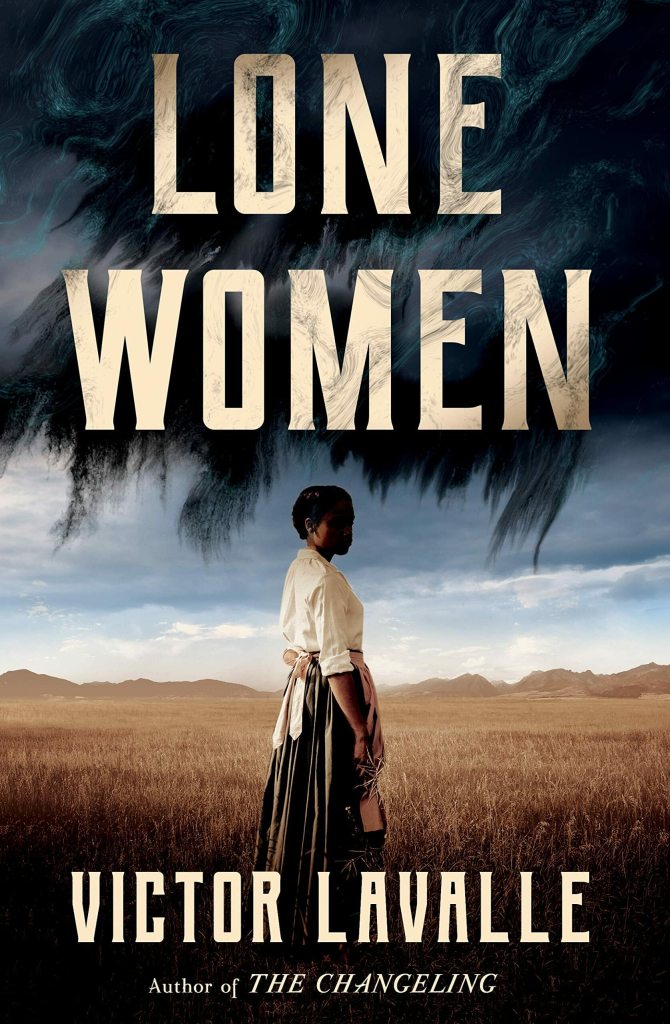The website of the county where I grew up had a warning for would-be residents: that if they made a home where the buffalo roam, etc., they would be subjected to the “law of the West,” meaning they wouldn’t have the amenities they might enjoy in a more populous area. In other words, come for the wide-open spaces and rugged freedom, and just hope you don’t have a heart attack. Those twin sides of self-reliance are front and center in Victor LeValle’s Lone Women, where the frontier is as much a place to hide as it is to thrive.
Adelaide Henry leaves her smoldering California home with a heavy trunk she makes sure is tightly locked at all times, even after she reaches her new homestead in Montana. If she can hack it on the homestead, it will be hers free and clear, part of the government’s effort to build up the areas it snatched from the land’s native residents. Adelaide’s got grit, but aside from that, a few leftover supplies, and the unhelpful contents of the trunk, that’s about all she has to last her the year. A set of neighbors and a very friendly cowhand from a nearby ranch get her off to a good start, and a few tentative relationships with other locals make her think she can make it, after all.
But secrets don’t stay secret forever, even if they’re locked up tight. The literal escape of Adelaide’s secret exacerbates tensions that were already fraying beneath the surface. Friendships, and family relationships, fracture under simmering racial, gender, and class discrimination. There are divisions, too, between those who change in response to the shifting landscape, geographically or socially, and those who can’t or won’t. Although the town is made up of misfits, it quickly becomes clear that some fit in better than others. Adelaide has to choose carefully who she trusts with the truth, and who she enlists to help contain her escaped secret before it’s too late.

Speculative fiction as metaphor is catnip to me. In this case, the literal thing stands in for the things we keep hidden from those around us. Sure, maybe Adelaide’s thing brings actual destruction, but the secrets held by others are destructive in other ways. Lost children, shed identities, and a dangerous family business all have their own ripple effects in the community, as does thinly concealed racism and sexism. It doesn’t take much for the fault lines to show in this community, even though the remoteness of the town makes it obvious to everyone that everyone needs everyone to survive. The landscape, and the weather, is as much a threat as the thing that escaped from Adelaide’s trunk, and there’s no way to capture or contain the endless winter or the parched earth. Its loneliness, too, echoes her internal loneliness from the self-imposed solitude she has sought for the secret she carries.
Typically, I wouldn’t mind being a little more transparent about the elements of the story. In this case, LeValle’s pacing, though sometimes a little inconsistent, means there are periodic reveals so fitting yet monumental that they change the whole framing of the story. Twice, I actually gasped. The ultimate resolution is radical, but it does reinforce many of the underlying themes woven throughout. There are challenges to living away from most other people, to removing yourself from the crowd, just as there are rewards. There are also challenges and rewards to gathering together and facing the world together. In Lone Women, the choice between solitude and community isn’t an easy, or a static, choice, and one not made lightly.
